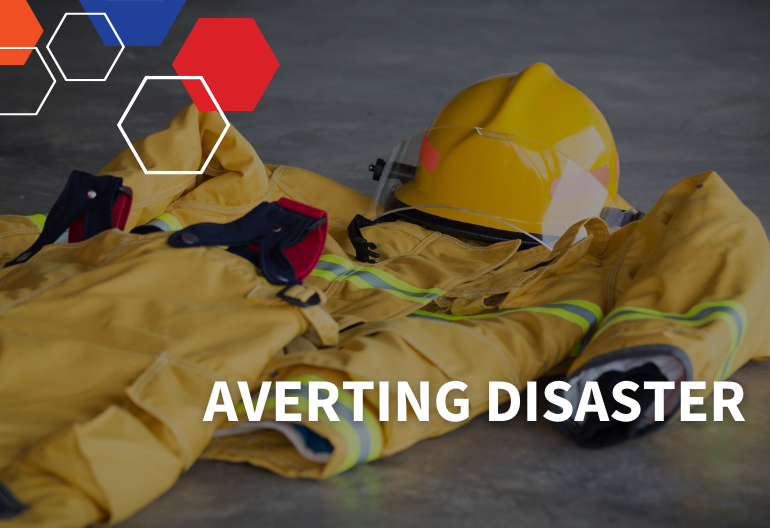Our solutions cover the entire employee lifecycle from selection through to development, focusing on individuals, teams and organisational solutions.
Averting Disaster

Safety solutions typically focus on education, equipment and protocol. Although advances in these areas have improved worker safety, they continue to neglect the overwhelming cause of workplace catastrophes: human error.
Building on a century of research, Hogan identified three components crucial for enhancing employee safety: worker personality – some people are more accident prone than others; a culture of worker engagement – engaged workers will follow rules and regulations; and organisational leadership – safety improves when it is valued by management.
Using this three-tiered approach, Hogan’s SafeSystem model evaluates the culture of engagement as it relates to safety, evaluates the orientations of individual workers, and creates a coaching process to improve organisational safety and protect companies’ human capital.
Worker Personality
Safety starts at the individual level. Whether they are careless, distracted, easily angered or defiant toward authority, as demonstrated by some of 2010’s worst accidents, the negative impact of a few unsafe workers can be widespread.
Case Study
Two employees of Top Notch Cleaners were found dead at an Alabama medical facility after they succumbed to carbon monoxide poisoning. Investigators determined the men failed to properly ventilate the area where they were using propane-powered floor buffers.1
Managers in safety-sensitive work environments have a mental list of employees who are inherently less safe than others. Research shows those same factors that cause managers to label some workers safe and others a risk can be measured using Hogan’s powerful assessment tools.
The Hogan Safety Assessment evaluates employees and job applicants in six safety-related competencies to provide valuable information to help develop safe worker behaviours.
- Compliant - High scores will conform to organisational guidelines and will be less likely to defy organisational authorities or ignore company rules.
- Strong - High scores will exhibit confidence in their work and will be less likely to make mistakes by panicking under pressure.
- Poised - High scores will display emotional control while working and will be less likely to make mistakes by losing their temper.
- Vigilant - High scores will remain attentive while performing repetitive tasks and will be less likely to make mistakes because of boredom.
- Cautious - High scores will perform work carefully, avoiding unnecessary risk and will be less likely to make mistakes by taking excessive risks.
- Trainable - High scores will remain open to new training and development and will be less likely to overestimate their own competence due to arrogance.
A Culture of Engagement
Workers want to know that everyone, regardless of rank, understands the risks they face daily. Nonchalance toward safety on the part of management translates into carelessness among workers.
Case Study
A ruptured heat exchanger at the Tesoro Refinery in Anacortes, Washington, caused an enormous explosion that rocked the plant and killed seven workers. Washington state OSHA personnel determined the explosion could have been prevented if the company had carried out proper testing and maintenance of the equipment.1
The SafeSystem Climate Survey provides management feedback regarding the perceptions of safety at all organisational levels as well as a company-wide safety score. The Climate Survey is also designed to track the performance of new safety initiatives and ensure policy consistency on multiple organisational levels.
Leadership
Safety starts with the individual, but an organisation’s leaders are ultimately responsible for the well being of its employees.
Case Study
The BP Deepwater Horizon oil rig exploded April 20, 2010, killing 11 workers, injuring 17 others, and pouring more than 200 million gallons of oil into the Gulf of Mexico.
BP has a history of safety incidents, including an oil leak in Prudhoe Bay, Alaska, and a deadly refinery explosion in Texas City, Texas. BP also received more than 700 safety violations at its refineries in the past three years.
Investigation into the incident revealed egregious decision making by BP executives ranging from former CEO Tony Hayward to rig supervisors. When subcontractors operating the rig warned BP their decisions regarding rig safety could have disastrous consequences, BP engineers reportedly ignored their advice, stating “this is how it’s going to be.”2
The SafeSystem Coaching Process not only provides employees with individual reports to increase strategic self-awareness, it teaches supervisors to use assessment data to help team members develop improvement plans and to guide daily management decisions.
Conclusion
The effectiveness of any safety program is limited by its ability to predict and influence the actions of its most volatile component: the human element. Using scientifically developed and validated personality assessments, SafeSystem addresses worker and managerial behaviour in a comprehensive program to lower safety risk and increase safety culture.
Read the full brochure here
*This article was originally published on Hogan Assessments
Notes:
1 Walter, Laura. COSH names top 10 workplace tragedies for 2010. EHS Today. January 5, 2011. http://ehstoday.com/safety/ management/cosh-top-workplace-tragedies-0105/
2 Nocera, Joe. BP ignored the omens of disaster. New York Times. June 18, 2010. http://www.nytimes.com/2010/06/19/ business/19nocera.html?_r=1&pagewanted=1
Contact us for more information Get CertifiedLatest posts
-
Apr 23, 2024
Workplace Competition: Why We Compete at Work
-
Apr 08, 2024
PBC and Hogan Update the Hogan 360 Assessment
-
Apr 03, 2024
Getting Assessment Advice from ChatGPT
Resources
Tap into our extensive collection of research, sample reports, case studies and thought leadership.
Related posts
How can we help?
Contact us to discuss your requirements.


